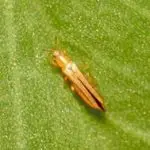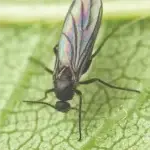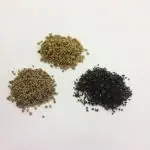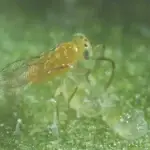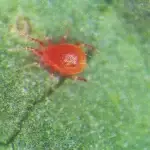Cucumbers
Overview
Several cucumber types are grown in Australia. The main commercial varieties are continental, lebanese and mini or snack size.
Cucumbers are highly attractive to a range of pests including thrips, Two-Spotted Mite, whiteflies, and aphids. Young cucumber seedlings are also very sensitive to attack from Fungus Gnat in the root zone, making them susceptible to root diseases such as pythium and phytophthora.
Cucumbers have a short crop cycle compared to other greenhouse crops —somewhere between 12-16 weeks in most instances. Where pest levels are low, cucumber crops may not need much spraying for pests at all. Where consecutive crops are grown on the same property, pests can persist and move from one crop to the next, causing significant problems.
Biological Services's cucumber IPM program can help you prevent many of these pests and it starts on the first day of planting. By getting on top of pests early, there is less chance for pests to build up and need for pesticides. Good control in one crop tends to reduce the problems in the next one.
Signs you have Cucumbers pests
The key to controlling pests in your greenhouse capsicums effectively, is detecting them early and introducing beneficials at the right moment.
- Western Flower Thrips is the most problematic thrips species. They do not cause much damage to green skins, apple and Lebanese varieties, but in continental varieties, you will see small feeding marks on fruit developing in the head of the plant prior to bloom. This will lead to bending of fruit making them unsaleable. Thrips also damage the foliage by direct feeding.
- Two-Spotted Mite and Bean Red Spider Mite breed quickly in cucumber crops. Leaf damage is rapid due to the thin leaf structure and large hotspots with webbing affecting many plants develop quickly during the dry and hot summers.
- Aphid and whitefly. Look for honeydew and sooty mould on the leaves. You can detect whitefly by disturbing the heads or leaves of the plants, especially plants along the perimeter, corners and near entrances of your greenhouse.
- Broad Mite. You cannot see Broad Mite with the naked eye. Their presence must be detected very early, or the plants could suffer permanent stunting due to damaged growing tips.
- Caterpillars. Chewing damage to the foliage is a sign you have caterpillars.
- Fungus Gnat can affect cucumber seedlings by attacking the roots directly and spreading soilborne diseases.
Products you can use to control Cucumbers pests
Biological Services produces a range of products to control pests among your cucumber crops.
You can also use sticky traps and rolls to support your IPM program. These will help you monitor and mass-trap thrips, winged aphids, Fungus Gnat, and whitefly adults.
Other tips for managing pests in your Cucumbers
An IPM program for Western Flower Thrips in continental cucumbers requires a banker plant system of flowering basil to establish Orius tantillus (Orius) which will inhabit the basil flowers.
Thrips are attracted to the white-scented basil flowers and Orius will control all thrips that enter the vicinity. Orius will move from the basil to the cucumber plants to feed on pests but they don't favour this crop for development as cucumbers do not produce pollen for them to feed on. While we recommend you use basil bankers in other cucumber varieties, especially in areas where thrips pressure is high, it is not essential.
Blueleaf® cucumber varieties are more tolerant of spider mite and thrips damage because of the thicker leaf structure, and this lets predatory mites gain the critical numbers needed to control the spider mite infestation.
Follow good irrigation practices to avoid unnecessary disease outbreaks which will require several fungicide applications to correct. Blueleaf® varieties are also more resistant to foliar disease such as powdery mildew, requiring fewer fungicide applications during the season. Fungicides are not as disruptive to the beneficials as toxic insecticides, but their overuse can undermine the success of the thrips and spider mite IPM control program.
Your local Biological Services consultant can provide year-round, professional crop monitoring and expert IPM program advice.
Get tailored advice for your commercial crop
To speak with one of our qualified consultants about your current commercial crop challenge or to learn about the benefits of the IPM maintenance and monitoring services we provide, contact us.





